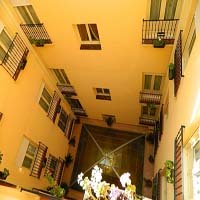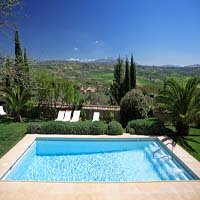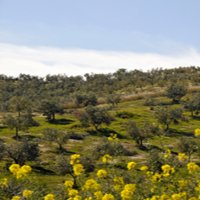Marbella Spain
Tucked into Andalusia’s beautiful Costa del Sol between the Strait of Gibraltar and Málaga, Marbella is a popular, cosmopolitan destination. Every year, a large number of international travelers visit Marbella, and it’s evolved into a favorite with jet setters, many of whom maintain part-time or full-time homes there.
What makes Marbella such a terrific place to visit? Why are so many international celebrities drawn to this particular part of Spain?
Naturally, Marbella’s lovely climate
and sparkling Mediterranean waters form the twin foundations of its appeal, but
this one-time sleepy little village has plenty of other enticing
characteristics. Let’s first look at
Marbella’s geography.
Geography
Marbella sits on the Costa del Sol region along the Mediterranean coast, but mountains aren’t far away. As a result, it’s fair to say that most parts of the city feature views of the coast, the mountains or both. The coastline itself is pretty developed but numerous golf courses are interspersed between residential areas. The city’s location also means that a visit to the British Overseas Territory of Gibraltar is just a short drive away.
Climate
Warm Mediterranean waters and the nearby mountains combine to give Marbella a mild climate, with an average annual temperature of 64 degrees F. (about 18 degrees C.) and an average of 320 sunny days a year.
History
Archeological digs have revealed that Marbella and the surrounding area have been inhabited since the Stone Age. The first “organized” settlement at what is now Marbella may have been established by the Phoenicians as early as 700 or so B.C. Phoenician and Carthaginian artifacts have been discovered in and around the city. Later, the area was occupied by the Romans, as was most of Spain. An ancient Roman bridge along the road which linked Spain and Rome still stands just west of Marbella, and ruins of Roman villas and baths are nearby.
Visigoths moved in as Rome declined but were ousted by the Moors, who constructed coastal fortifications, lighthouses, a defensive wall and a citadel (Alcazaba) to protect Marbella. Marbella remained part of the Moorish Caliphate of Córdoba for over seven centuries, from the early 700s until the late 1400s. Throughout this period, the significant structures were mosques and the Alcazaba; Marbella’s cobbled lanes were mostly lined by smallish buildings with big patios in the Moorish style. Moorish structures and other influences can still be seen throughout El Casco Antiguo (Marbella’s “Old Town”).
In 1485, during the Christian Reconquista, Castile assumed control of Marbella. Castile’s monarchs (Isabella and Ferdinand of Christopher Columbus fame) designated the city as the region’s capital and shortly afterward the Fuerte de San Luis de Marbella (Fort of San Luis of Marbella) and the Plaza de los Naranjos (Orange Square) were built. Today, the fort houses a museum and its grounds feature a church and chapel. The Casa del Corregidor, constructed in the 16th century, stands on the Plaza along with the Casa Consistorial and the 15th-century Ermita de Santiago.
By the 1800s, there were three main sections of town – El Casco Antiguo, Barrio Alto (sometimes referred to as San Francisco) and Barrio Nuevo. The town’s first hotels started arriving in the early 1900s. Several churches were destroyed during the violence immediately before and throughout the Spanish Civil War. Troops from Fascist Italy helped seize the town for the Spanish Nationalists and Marbella became a safe harbor in Spain for prominent Nazis of the period.
The first tourist resort appeared in Marbella not too long after the end of World War II. At the time, the town only had about 900 permanent residents, a drop in the bucket compared to its 140,000+ population today, but it quickly became a haven for the rich and famous. The Marbella Club became a favorite hangout for European aristocracy, wealthy businesspeople, film stars and other members of the elite. Its reputation as a desirable destination is now strongly established, and Marbella continues to cater to middle-class and upper-crust visitors. The city’s tourism infrastructure (hotels, resorts, restaurants, bars, clubs, shopping venues and the like) is well-developed.Culture
Marbella is more than just sunny beaches, yachts and marinas, quality golf and mountain vistas, although they all play an important role in its popularity. In fact, there’s no shortage of cultural events. The city’s offerings range from museums, gardens and opera performances to traditional Andalusian festivals (held mainly between June and October), bullfights and concerts. As mentioned above, archeological sites and historic buildings are scattered throughout the area. The traditional cuisine in this part of Spain emphasizes fried seafood, including squid, mullet, mackerel and anchovies. Churros, wine donuts, gazpacho and garlic soup are other local favorites, but Marbella is quite cosmopolitan and you can dine on almost any type of cuisine.
Attractions
A few of the things you should investigate while you’re in this historic city in Spain include:
- · The narrow streets of Old Town and Orange Square, along with their historic Andalusian and Moorish buildings.
- · The Golden Mile of Nueva Andalucía, a 4-mile stretch of magnificent homes (including King Fahd’s Palace), luxurious, landmark hotels, Roman ruins and Moorish gardens.
- · Eixample, a historic area between the Old Town and the coast. It features 10 Dalí sculptures, fountains and a botanical garden.
- · Night racing at the Hipódromo Mijas Costa, a popular thoroughbred track.
- · The city’s interesting and unusual Bonsai Museum.
- · The Ralli Museum, which houses paintings by Dalí, Miró, Chagall and others, along with sculptures by Dali and Maillol.
- · The Ingenio Cultural Center, housed inside an old sugar mill. An early Christian basilica and vaulted Roman baths are nearby.
- · World-class golf at one of the area’s 40+ courses.
- · Yacht- and people-watching (don’t be surprised if you spot a few celebrities, Rolls Royce’s, Bentleys and Maseratis).
- · Parasailing over the Mediterranean.
- · Last but not least, 17 miles of coastline divided into 24 beaches. They each have a different character and the sand ranges from fine to coarse. A few of these beaches are nudist, but most of them aren’t. Almost all the beaches are popular, especially during the high tourist season (the summer months).
Marbella, Spain offers much more than this small sampling of things you can see and do. It’s a historic Andalusian city and a marvelous destination.
Copyright© southern-spain-travel.com All Rights Reserved. Content Protected By DMCA.
Authentic Spain Food
It's true! Get tapas, jamon, olive oil, manchego and chorizo shipped directly from Spain
Get Football Tickets
Click here to buy tickets to Spains Sports events
Book a Hotel






New! Comments
Have your say about what you just read! Leave me a comment in the box below.